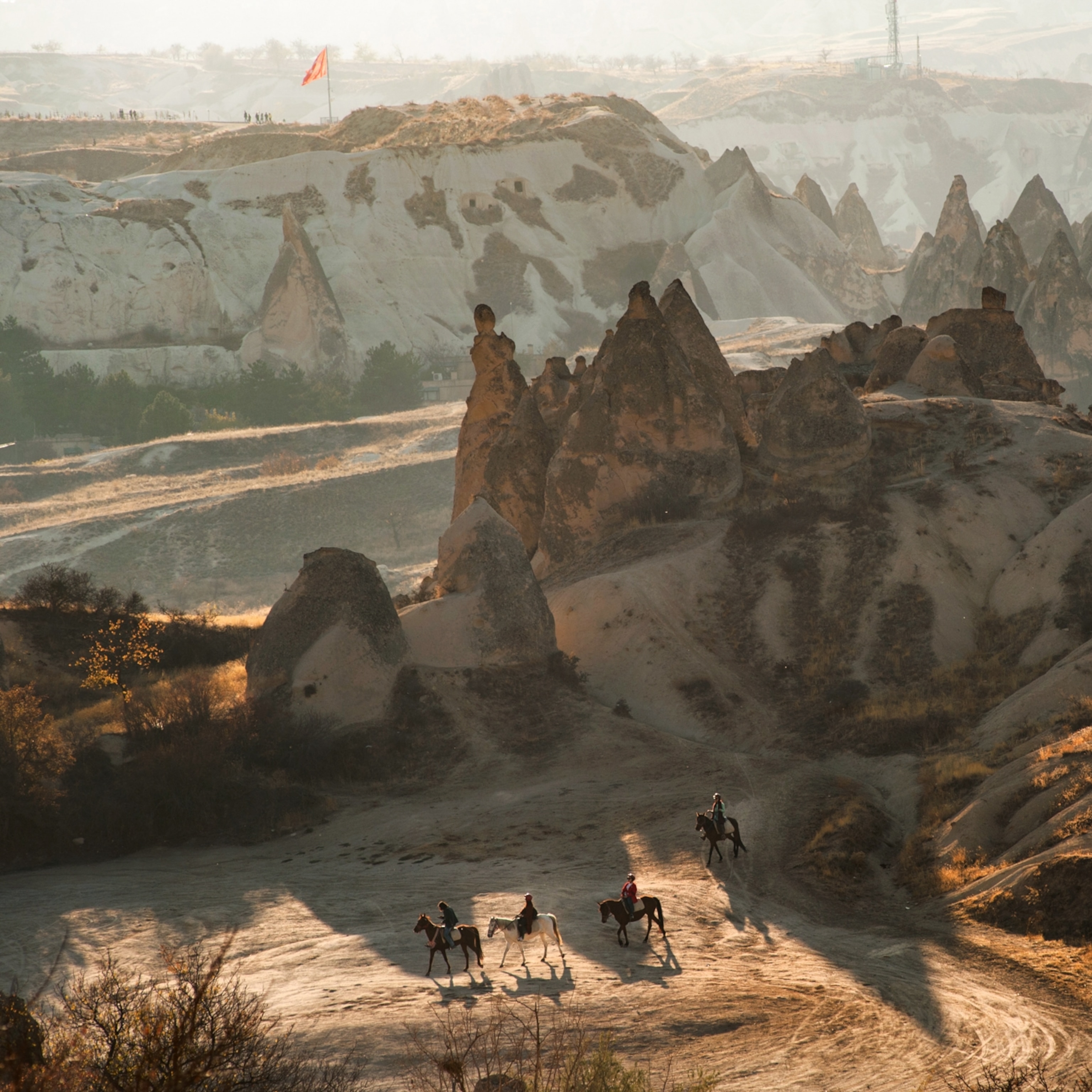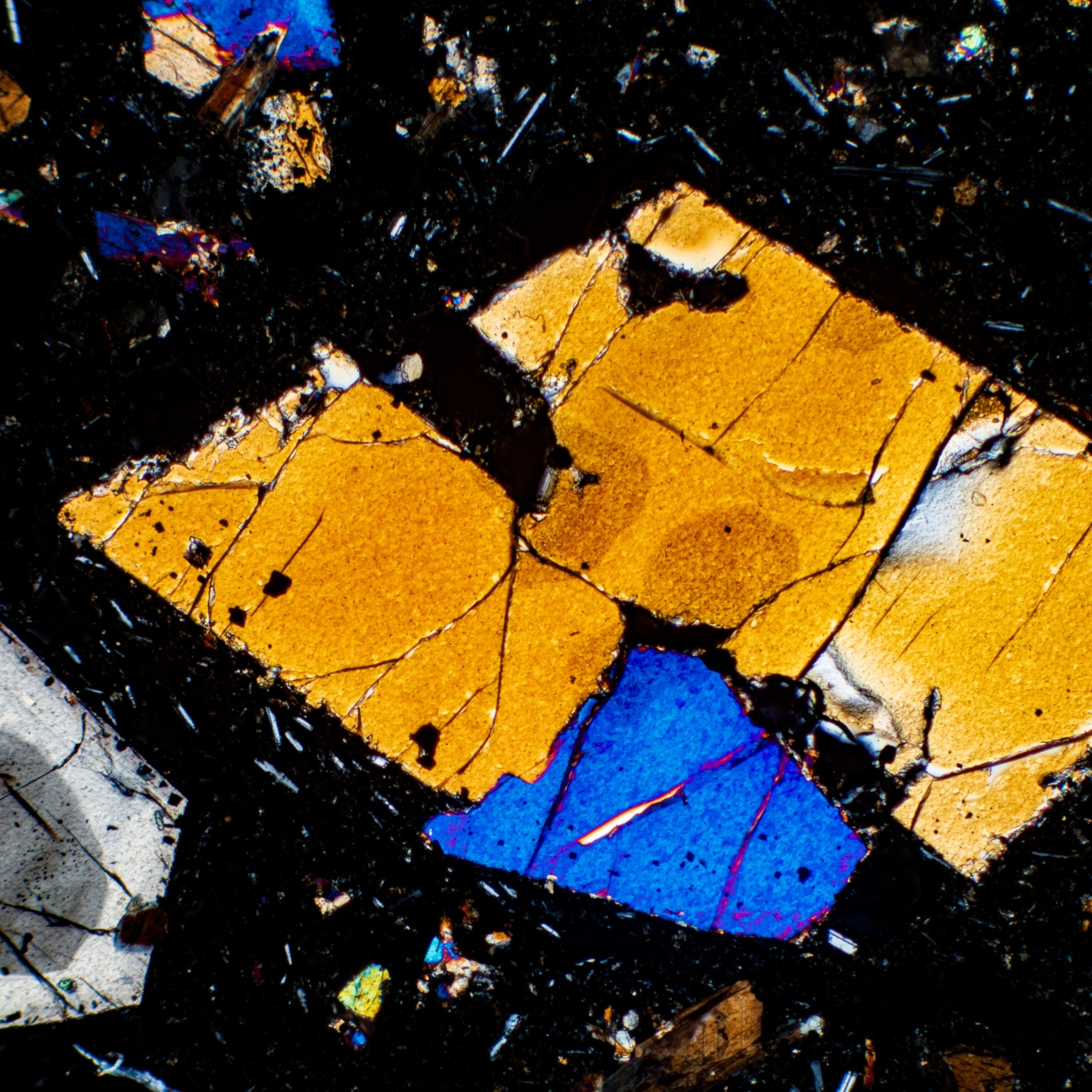
Volcano Safety Tips
These fiery features can be as dangerous as they are mesmerizing. Here are a few things to keep in mind if you live near or plan to visit a volcano.
Millions of people around the world live near one of the roughly 1,500 active volcanoes on Earth—from Italy’s Campi Flegrei to Indonesia’s Merapi to the United States’ Mount Rainier. While that may seem crazy to some, there's a myriad of reasons why people call these volcanic landscapes home.
Fertile soils frequently blanket their slopes thanks to the slow breakdown of ancient volcanic rocks, which releases a host of nutrients vital for healthy crops and vineyards that produce flavorful grapes. Volcanoes also have deep roots in the history of civilizations, leading to their starring role in the spirituality and mythos of many cultures. And they spark the imagination, drawing numerous visitors to their flanks who feed a profitable industry in tourism. (See dramatic photos of volcanoes around the world.)
Yet their fiery fits can be as dangerous as they are mesmerizing, sending rivers of molten rock and avalanches of searing ash and gas barreling down their sloping sides. So if you live near one of these mighty features—or plan to visit one on your next trip—here’s some hazards to be aware of and steps you can take to stay safe during an eruption.
What are some eruption hazards?
Volcanoes pose an ever-shifting array of dangers, and each volcano is different. Some explode with fearsome force, like the 1980 eruption of Mount St. Helens. Other volcanoes send streams of lava flowing down their flanks, like what happened during Kilauea’s 2018 eruption. And these dangers can spark many other issues including fires and flows of debris. The following are some of the many hazards volcanoes can pose:
Lava flows: These rivers of molten rock are extremely hot. While their exact temperature depends on their chemistry, lava flows can exceed a searing 2,000 degrees Fahrenheit—hot enough to melt copper. The temperature and chemistry also play into the lava’s viscosity, which controls how fast it flows. While some can be readily out-walked, others rush surprisingly quickly. When Kilauea erupted in 2018, it was oozing lava near the vent at a rate of 15 miles per hour, faster than the vast majority of people can run.
Volcanic projectiles: These bits of searing hot rock are flung from active vents or volcanic craters. If they’re larger than 2.5 inches across, they’re dubbed lava bombs. While claims of refrigerator-sized lava bombs during Kilauea’s 2018 eruption were overblown, these blazing blocks can be up to several yards across. And at sizzling hot temperatures, even small volcanic projectiles can be dangerous, setting fires, breaking bones, and melting human flesh.
Pyroclastic flows: Blistering-hot avalanches of gasses, rocks, and volcanic ash can barrel down a volcano’s slopes, burying structures, sparking fires, and destroying everything in their path. They are extremely speedy, with some rushing as fast as 450 miles per hour. Pyroclastic flows can even travel uphill or cross water. Volcanoes that produce such flows are extremely dangerous. For example, pyroclastic flows abounded during the infamous eruption of Mount Vesuvious in 79 A.D. that devastated the city of Pompeii, Italy. (Read about how Vesuvious may have killed its victims.)
Lahars or debris flows: This term describes a hot or cold slurry of water and rock fragments that rushes down a volcano’s slopes like “rivers of concrete,” according to the USGS. These often follow valleys or river channels and can move startlingly fast. While a lahar may start small, it can grow as it travels, carrying along any debris it encounters.
Toxic gases: Volcanoes also release toxic gasses, such as carbon dioxide, carbon monoxide, sulfur dioxide, and hydrogen chloride. Some of these, like sulfur dioxide, are extremely corrosive and can irritate the skin, eyes, and respiratory systems of hapless onlookers. In rare cases, the gasses can be deadly: A surge of carbon dioxide poured out of Africa’s volcanic Lake Nyos in 1986, sweeping a nearby village and suffocating hundreds of people and cattle.
Volcanic ash: Unlike the fluffy bits that linger after a camp fire, volcanic ash is made up of tiny fragments of rock and shards of glass. It’s damaging to lungs and can form a hefty blanket over nearby towns—even collapsing roofs of some structures. Ash can also shoot miles high into the sky and rain down for many miles around, posing a hazard for people quite far from an active volcano. (Learn about how lightning can help signal the start of potentially dangerous eruptions of farflung volcanoes.)
What to do before an eruption?
Unlike earthquakes, volcanoes rouse from sleep with some notice—shaking the ground, bulging their flanks, or shifting the gases wafting from their craters and vents. And for many volcanoes near populations, scientists closely watch their every move, which allows them to better understand when they might burst to life.
So if you live near a volcano, or plan to visit one, familiarize yourself with the local monitoring agencies. Understand where you can safely tromp and where you need to steer clear, regions known as exclusion zones. It’s also important to look up evacuation routes and hazards specific to your location.
Some places offer regular updates of volcanic activity. For example, the U.S. Geological Survey’s Volcano Notification Service emails information about monitored volcanoes in the United States, which boasts more than 10 percent of the planet’s active or potentially active volcanoes.
Another vital preparation step is assembling an emergency kit that includes supplies like food, water, respiratory protection, eye protection, and a battery-powered radio. When preparing your kit, consider each member of your family and their needs—and don’t forget your pets. The Department of Homeland Security has a detailed guide about putting together a kit for many different contingencies.
Even if you are just visiting a volcano for a day, make sure you are traveling with appropriate footwear, first aid supplies, and plenty of water.
“Volcanoes can change very quickly and eruptions can begin with little to no warning,” cautions volcanologist Janine Krippner in a blog entry about important safety measures to take when visiting volcanoes.
What to do during an eruption?
During a disaster, be wary of misinformation and try to stick to official sources, many of which communicate dangers through social media. For example, Krippner has assembled a handy list of official volcano agency Twitter accounts. Follow instructions from authorities during an eruption, and evacuate if you are within areas told to do so.
If you are instructed to remain in your home, close all windows, doors, and other points of entry for ash. Bring pets inside and move livestock to shelters, when at all possible. Avoid running air conditioning systems, fans, and heaters during or immediately after an eruption, since they can pull in volcanic gasses and ash. Also, fill large containers, sinks, and bathtubs with clean water since eruptions can cause disruptions or contamination of water supplies.
If an evacuation seems on the horizon, the Centers for Disease Control recommends gathering additional supplies to keep in your vehicle, which should include flares, maps, basic tools, sleeping bags, and a fire extinguisher. When packing personal items, take only the essentials. And don’t forget including at least a week’s supply of any required prescription medications. If you don’t own a vehicle, contact neighbors or others nearby who might be able to provide a ride in case you and your family need to leave.
If you must be outside, try to use a mask whenever possible. The CDC recommends the use of N-95 respirators, which can be purchased in a hardware store. While a dusk mask can be used as a last resort, the CDC cautions that they only should be used outdoors for short periods of time when ash is falling. Other ash protection includes long-sleeved shirts and long pants as well as goggles. Be aware of your surroundings, and be extra cautious if you are in low-lying regions or near river valleys as those commonly funnel debris flows.
What to do after an eruption?
Heed authorities’ instructions for when it’s safe to go back outside or return to your home. Alert family and friends of your status via text message or using the Red Cross’ Safe and Well website. Avoid making phone calls unless it is an emergency as telecommunications are commonly very busy during and after disasters.
When it is safe to return home, check the structure and utilities for damage. The Red Cross has helpful guides that detail what to look for when returning after disaster. Also, document any damage in photos for insurance purposes.
Don respiratory protection when cleaning up ash indoors or out. The Red Cross suggests removing ash from your roof as soon as possible since it is heavy and cause structural collapse—a problem only made worse with rainfall. However, be extra careful with ash removal if you have breathing problems. Also, if you must climb on your roof, watch out, since ash can also be slippery and cause falls.
Such powerful displays of Earth’s fearsome force can be frightening, but with some preparation and close following of official instructions, you can reduce the risk of being blindsided by a blast.
Related Topics
You May Also Like
Go Further
Animals
- Octopuses have a lot of secrets. Can you guess 8 of them?
- Animals
- Feature
Octopuses have a lot of secrets. Can you guess 8 of them? - This biologist and her rescue dog help protect bears in the AndesThis biologist and her rescue dog help protect bears in the Andes
- An octopus invited this writer into her tank—and her secret worldAn octopus invited this writer into her tank—and her secret world
- Peace-loving bonobos are more aggressive than we thoughtPeace-loving bonobos are more aggressive than we thought
Environment
- This ancient society tried to stop El Niño—with child sacrificeThis ancient society tried to stop El Niño—with child sacrifice
- U.S. plans to clean its drinking water. What does that mean?U.S. plans to clean its drinking water. What does that mean?
- Food systems: supporting the triangle of food security, Video Story
- Paid Content
Food systems: supporting the triangle of food security - Will we ever solve the mystery of the Mima mounds?Will we ever solve the mystery of the Mima mounds?
- Are synthetic diamonds really better for the planet?Are synthetic diamonds really better for the planet?
- This year's cherry blossom peak bloom was a warning signThis year's cherry blossom peak bloom was a warning sign
History & Culture
- Strange clues in a Maya temple reveal a fiery political dramaStrange clues in a Maya temple reveal a fiery political drama
- How technology is revealing secrets in these ancient scrollsHow technology is revealing secrets in these ancient scrolls
- Pilgrimages aren’t just spiritual anymore. They’re a workout.Pilgrimages aren’t just spiritual anymore. They’re a workout.
- This ancient society tried to stop El Niño—with child sacrificeThis ancient society tried to stop El Niño—with child sacrifice
- This ancient cure was just revived in a lab. Does it work?This ancient cure was just revived in a lab. Does it work?
- See how ancient Indigenous artists left their markSee how ancient Indigenous artists left their mark
Science
- Jupiter’s volcanic moon Io has been erupting for billions of yearsJupiter’s volcanic moon Io has been erupting for billions of years
- This 80-foot-long sea monster was the killer whale of its timeThis 80-foot-long sea monster was the killer whale of its time
- Every 80 years, this star appears in the sky—and it’s almost timeEvery 80 years, this star appears in the sky—and it’s almost time
- How do you create your own ‘Blue Zone’? Here are 6 tipsHow do you create your own ‘Blue Zone’? Here are 6 tips
- Why outdoor adventure is important for women as they ageWhy outdoor adventure is important for women as they age
Travel
- This royal city lies in the shadow of Kuala LumpurThis royal city lies in the shadow of Kuala Lumpur
- This author tells the story of crypto-trading Mongolian nomadsThis author tells the story of crypto-trading Mongolian nomads
- Slow-roasted meats and fluffy dumplings in the Czech capitalSlow-roasted meats and fluffy dumplings in the Czech capital







